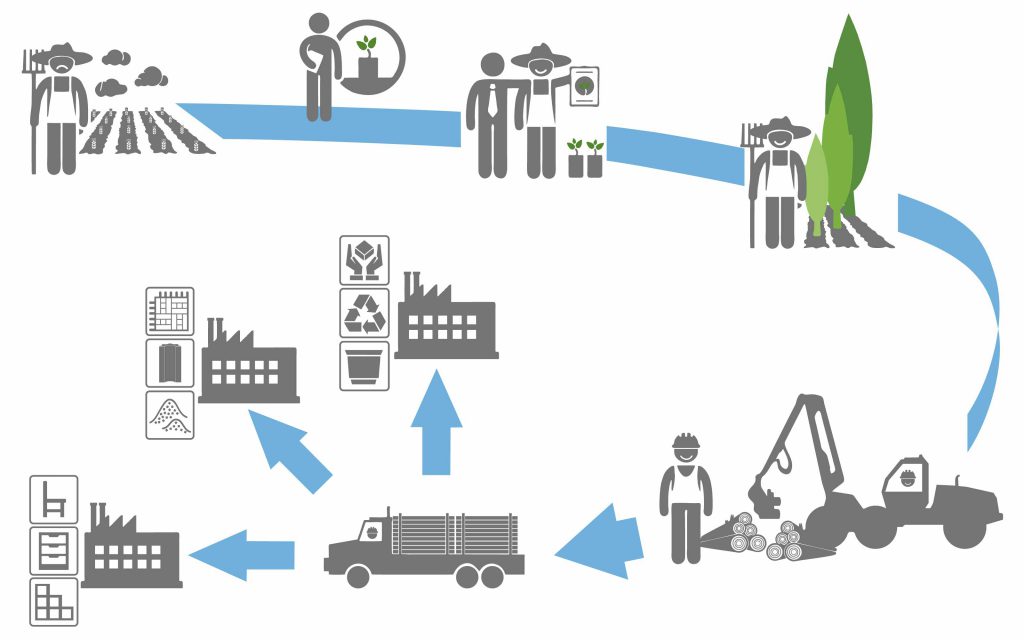Once a farmer or landowner decides to cultivate fast-growing poplars on their land, we first conclude an agreement with them and get the process of planting trees started.

First year
The soil needs to be prepared first. We first till and mulch the soil well before planting. We plant the trees in the spring, and they are most vulnerable in the first year as a result of high pressure from wildlife and excessive weed growth, and our management practices are intensified as a result. We regularly monitor the poplars as they grow and get stronger. On the lots where the ~1-m tall seedlings have taken over, the trees will grow to a height of approximately 5 m during the growing season from April to September.
Second to fourth years
The plantation is cleared using a disc harrow during this period once or twice a year. The farmer is responsible for disc harrowing. If they lack the necessary equipment, we can lend it to them or cover all these management steps ourselves. The farmer’s job is to monitor the plantation until the moment the crop is harvested. Emphasis is on weeds, and damage caused by insects, fungi and wildlife.
Fifth year
We then harvest the trees at the end of the fifth year and transport them to the facility in Malacky, where we use the wood to manufacture IKEA Industry furniture boards. Another 5-year growth cycle then begins. This time there is no planting as the trees regrow from the original stumps. The goal is to have a total of 4 cutting cycles every 5 years, which give farmers 20 years of stable returns and cooperation. Once the entire process is over, we return the soil to its original condition or leave it even better than it was before planting. This land is immediately ready for the cultivation of ordinary agricultural crops.

CHRISTOPH LEIBING, IKEA Industry program manager
“We only harvest wood from plantations in the winter. We cut the trunks, but the stump stays in the ground and a tree regrows from it in the spring. This is a modern and very effective way to make use of the land. The tree grows faster in the second cycle and is more resilient by growing from a stronger root system.”

